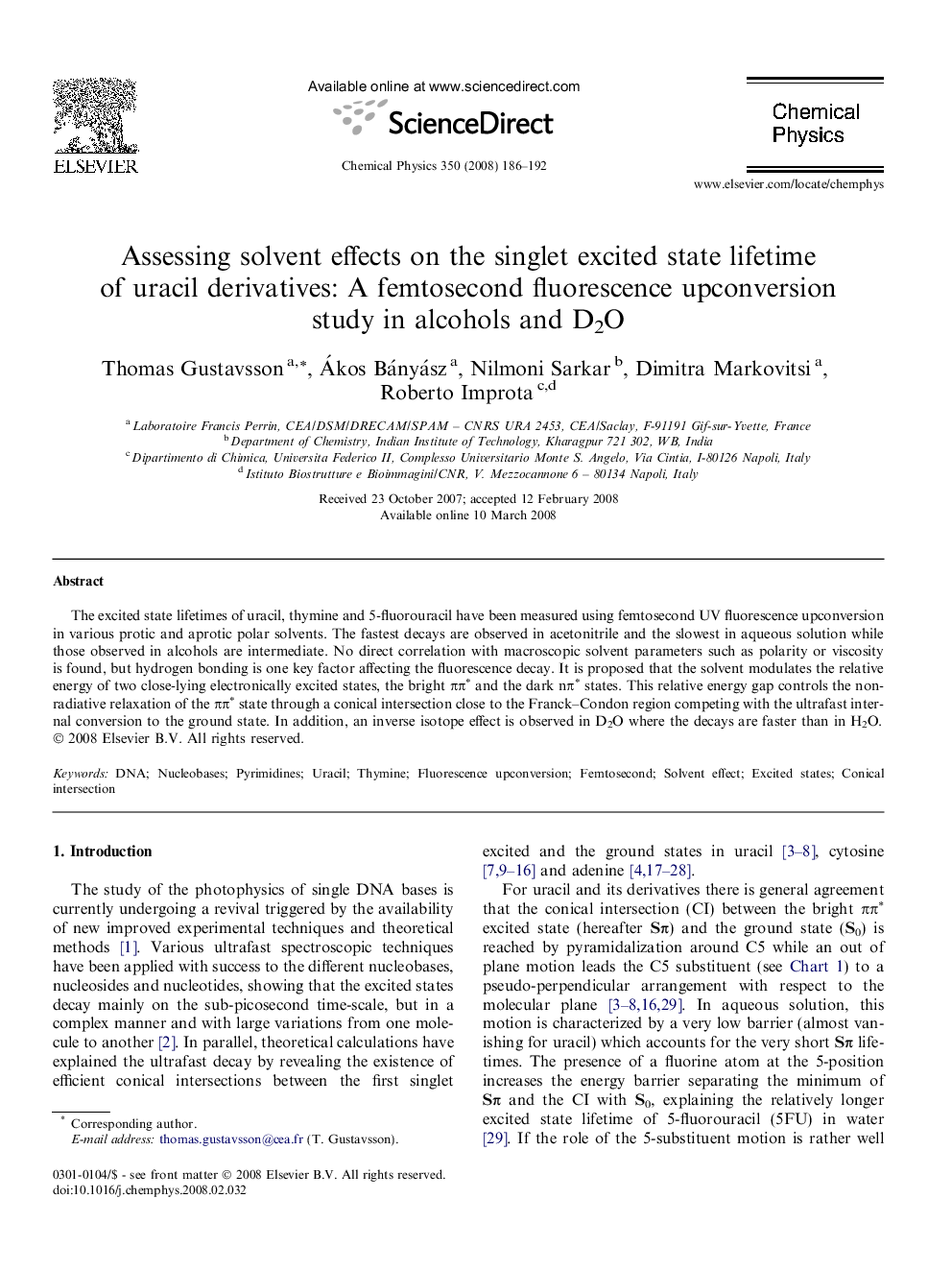| Article ID | Journal | Published Year | Pages | File Type |
|---|---|---|---|---|
| 5375645 | Chemical Physics | 2008 | 7 Pages |
Abstract
The excited state lifetimes of uracil, thymine and 5-fluorouracil have been measured using femtosecond UV fluorescence upconversion in various protic and aprotic polar solvents. The fastest decays are observed in acetonitrile and the slowest in aqueous solution while those observed in alcohols are intermediate. No direct correlation with macroscopic solvent parameters such as polarity or viscosity is found, but hydrogen bonding is one key factor affecting the fluorescence decay. It is proposed that the solvent modulates the relative energy of two close-lying electronically excited states, the bright ÏÏâ and the dark nÏâ states. This relative energy gap controls the non-radiative relaxation of the ÏÏâ state through a conical intersection close to the Franck-Condon region competing with the ultrafast internal conversion to the ground state. In addition, an inverse isotope effect is observed in D2O where the decays are faster than in H2O.
Keywords
Related Topics
Physical Sciences and Engineering
Chemistry
Physical and Theoretical Chemistry
Authors
Thomas Gustavsson, Ákos Bányász, Nilmoni Sarkar, Dimitra Markovitsi, Roberto Improta,
